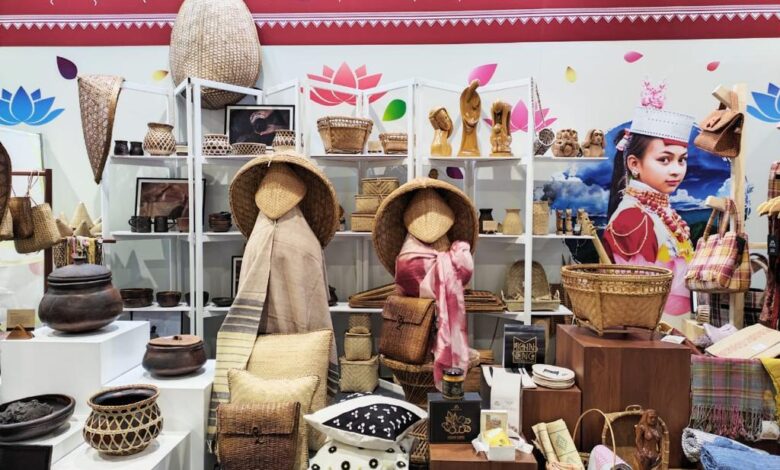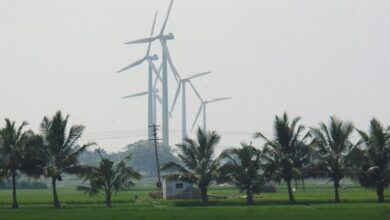NE can lead global sustainable textiles market
Promoting sustainable practices and developing high-value products will significantly enhance the market

 India’s textile heritage is not just an industry, it is an art form, a tradition and an integral part of the nation’s identity. For centuries, the handloom sector has thrived by utilising natural fibres such as cotton, silk, jute, banana, pineapple, areca nut, flax, hemp and ramie, which form the cornerstone of sustainable textile production.
India’s textile heritage is not just an industry, it is an art form, a tradition and an integral part of the nation’s identity. For centuries, the handloom sector has thrived by utilising natural fibres such as cotton, silk, jute, banana, pineapple, areca nut, flax, hemp and ramie, which form the cornerstone of sustainable textile production.
Indian textiles are celebrated for their rich variety in texture, colour, pattern, and embellishment. Throughout history, textile weaving has played a pivotal role in the social and economic life of Indian communities, carrying cultural knowledge and reflecting their social, economic, and political structures.
Cultural significance of textiles in NE
The northeastern region, consisting of eight states—Assam, Manipur, Nagaland, Meghalaya, Mizoram, Tripura, Arunachal Pradesh, and Sikkim—boasts a rich textile tradition. Each tribe and community in the region has unique motifs and designs that are deeply rooted in their culture and traditions.
The region’s tribal handicrafts and textiles are not just products, they are expressions of identity, heritage and community values. These textiles significantly contribute to the socio-economic life of the region, while also serving as symbols of cultural continuity.
Growing global market for natural fibres
The global market for natural fibres has witnessed remarkable growth, valued at $4.9 billion in 2022 and is expected to expand at a compound annual growth rate (CAGR) of 7.3% from 2023 to 2032.
The surge is driven by the increasing demand for eco-friendly, biodegradable and sustainable alternatives to synthetic textiles.
Natural fibres, including both animal-based (silk, wool, cashmere, mohair, alpaca) and plant-based fibres (cotton, linen, hemp, flax, ramie, sisal, banana), hold vast potential across various industries such as textiles, agriculture, and handicrafts.
Northeast India is particularly well-positioned to promote sustainable natural fibres, including cotton, bamboo, banana, pineapple, ramie, Comilla cotton, jute and other allied fibres.
The region produces over 1.2 million metric tonnes of pineapple annually, offering an abundant source of leaves for fibre extraction. Similarly, areca nut cultivation yields approximately 600,000 tonnes annually, providing a sustainable fibre resource from husks.
Additionally, ramie, primarily cultivated in Assam and Meghalaya, and Comilla cotton are valuable natural fibres with broad applications. Leveraging these fibres can preserve the region’s textile heritage and position the North East as a leader in sustainable textile production, contributing to both economic growth and environmental sustainability.
NE role India’s natural fibre economy
As India aims for its ambitious $5-trillion economy, natural fibres, heritage textiles and indigenous crafts have a critical role to play in this vision.
Meghalaya, Assam and Tripura are rich in fibres such as banana pseudostem, pineapple leaf (PALF), ramie, bamboo, and silk (Eri, Muga, and Mulberry). These fibres hold enormous potential for sustainable economic growth, rural employment, and global exports.
The region also holds great potential to capitalise on the Pineapple Leaf Fiber (PALF) as a zero-waste textile resource. States like Assam, Meghalaya, Manipur and Tripura lead the nation in pineapple cultivation, yet the economic potential of the leaves — usually discarded as agricultural waste — remains largely untapped.
PALF is in high demand in eco-fashion, blended fabrics, technical textiles, composite materials and paper production due to its tensile strength, biodegradability and versatility.
Expanding fibre extraction could contribute $500 million annually to the region’s economy, creating thousands of jobs and reducing agricultural waste.
Ramie, a fibre known for its exceptional strength, natural lustre, biodegradability and resistance to microbes, is another key resource for the region. Its cultivation, especially in Assam and Meghalaya, is supported by favourable agroclimatic conditions.
India can boost its natural fibre exports by $300–400 million annually by enhancing ramie production and infrastructure. This will reduce dependence on synthetic materials while creating new economic opportunities in the region.
Overcoming challenges
Despite the promising potential, several challenges hinder the growth of the natural fibre industry in the North East. These include labour-intensive cultivation and processing methods, inadequate processing facilities and limited market access.
To overcome these barriers, a strategic approach is needed, focusing on capacity building, infrastructure development and policy support. Government subsidies, incentives and decentralised processing units can act as catalysts for growth.
Collaboration between farmers, artisans, research institutions and private enterprises will be essential to create an integrated value chain for natural fibre products.
Investment in research and development to enhance fibre extraction and processing techniques can drive innovation and competitiveness in the global market.
Promoting sustainable practices and developing high-value products will significantly enhance the market potential of natural fibres. Through concerted efforts, the North East can unlock the full potential of its natural fibres, achieving economic empowerment, environmental conservation and cultural preservation.
By combining traditional knowledge with modern advancements, Northeast India can become a global leader in sustainable textiles, paving the way for a greener and more prosperous future.





